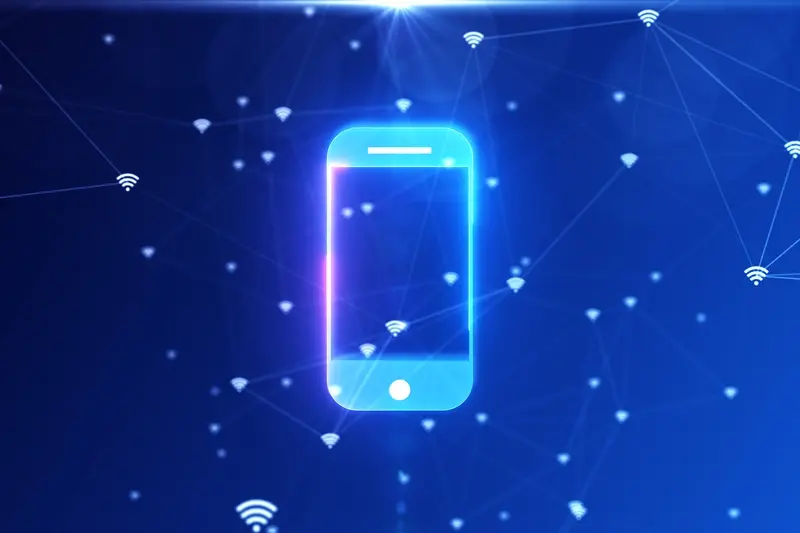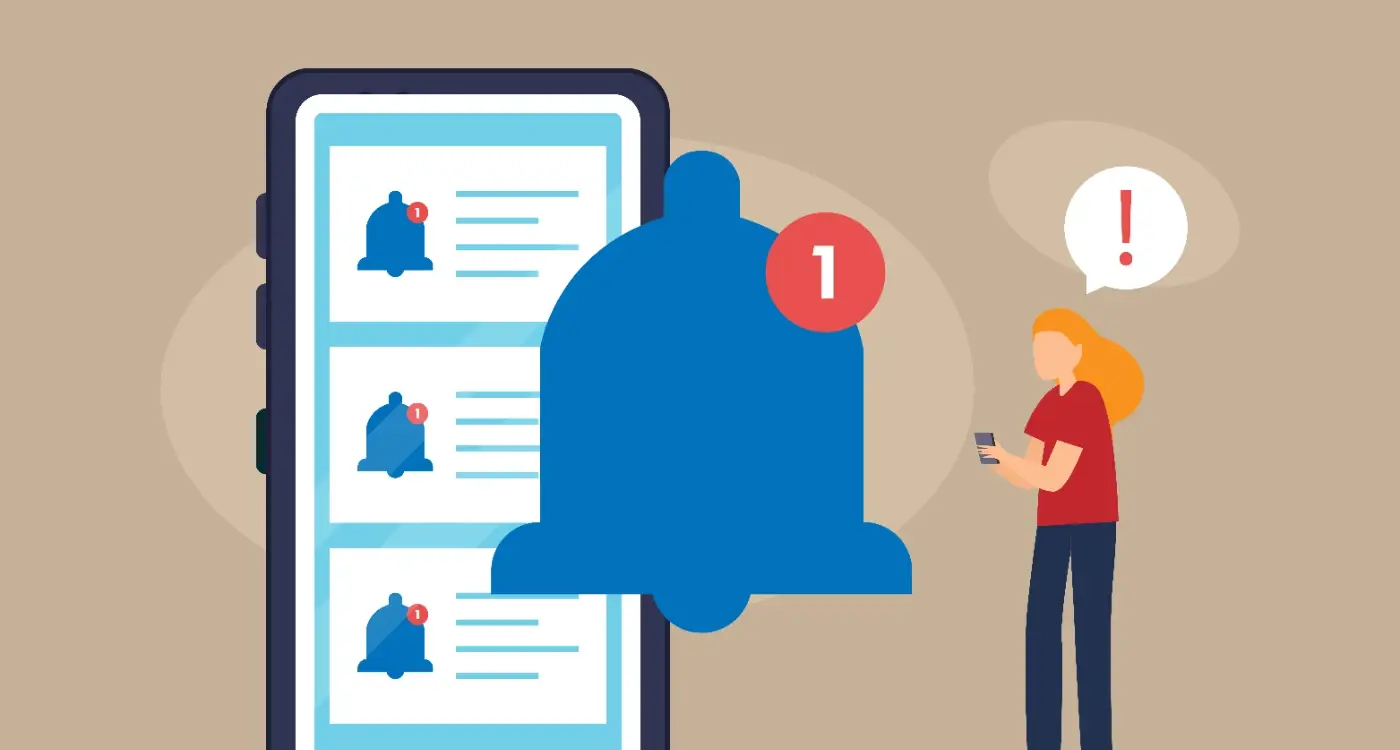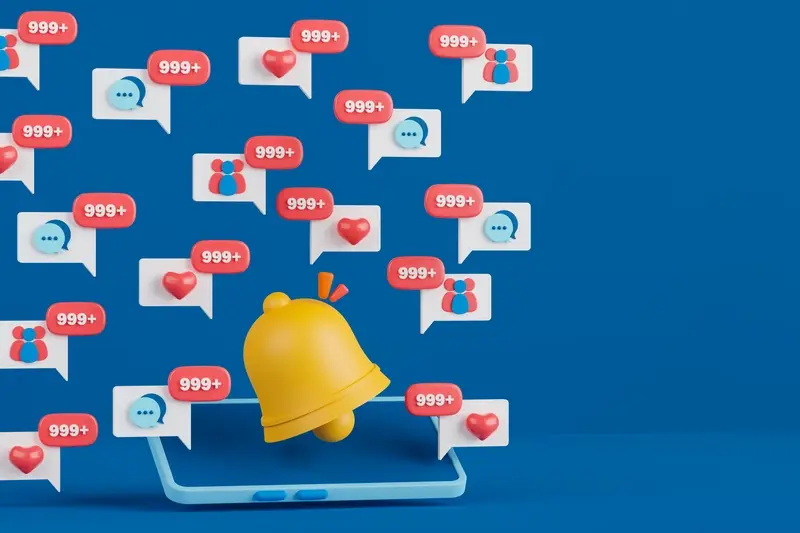How Do Push Notifications Actually Work In Mobile Apps?
The average smartphone user receives 64 push notifications every single day—that's one every 15 minutes during waking hours. Yet most people building mobile apps have no idea how these tiny messages actually make their way from a server somewhere to that little ping on your phone. I've been working with mobile app development for years now, and I still find it fascinating how this whole notification system works behind the scenes.
When I first started building apps, push notifications felt like magic. You'd write some code, hit send, and somehow your message would appear on thousands of devices across the world. But there's actually a pretty clever system working away in the background—one that involves Apple, Google, and a whole network of servers passing messages around like a very organised postal service.
Understanding how push notifications work isn't just about the technical bits; it's about building better connections with your users without driving them absolutely mad with constant pings.
The thing is, getting your notification system right can make or break your mobile app. Get it wrong and people will turn off notifications faster than you can say "breaking news alert." Get it right and you've got a direct line to your users that can boost engagement, bring people back to your app, and actually provide real value. That's what we're going to explore together.
What Are Push Notifications and Why Do They Matter
Push notifications are those little messages that pop up on your phone screen—even when you're not using the app that sent them. They're like a tap on the shoulder from your favourite apps, letting you know something interesting has happened. Your banking app might tell you about a payment, Instagram might share that someone liked your photo, or your weather app could warn you about rain.
I've watched countless apps succeed or fail based on how well they use push notifications. The ones that get it right see users coming back again and again; the ones that don't often end up deleted from phones faster than you can say "notification overload". That's because these messages are incredibly powerful—they can bring people back to your app days or weeks after they last used it.
Why Push Notifications Are So Important
Think about it this way: most people download apps and forget about them pretty quickly. Without push notifications, your app becomes invisible once someone closes it. But with smart notifications, you can:
- Remind users about features they haven't tried yet
- Share important updates or news
- Bring people back when they've been away too long
- Create a sense of urgency around special offers
- Make your app feel more personal and engaging
The key is sending the right message at the right time to the right person—something we'll explore throughout this guide.
The Technical Foundation—How Push Notifications Travel From Server to Screen
Right, let's get into the nuts and bolts of how push notifications actually work in your mobile app. The journey starts with your app's server—this is where the magic begins. When something happens that needs a user's attention (maybe a new message or an update), your server creates a notification and sends it to what's called a push notification service.
The Push Notification Services
For iOS apps, this service is Apple Push Notification Service (APNs). For Android, it's Firebase Cloud Messaging (FCM). These services act as middlemen between your server and the user's device. Your server can't talk directly to someone's phone—it needs these services to deliver the message.
Once the push service receives your notification, it does the hard work of finding the right device and delivering the message. The user's phone is constantly listening for these messages, even when your app isn't open. That's why notifications can appear even when you haven't used the app for weeks.
The Final Delivery
When the notification reaches the device, the operating system takes over. It displays the notification according to the user's settings and your app's configuration. If the user taps it, your app opens and can respond accordingly.
Each device gets a unique token when your app is installed—this is how the notification system knows exactly where to send each message.
Setting Up Your Push Notification System—The Building Blocks Every Mobile App Needs
Right, let's talk about the nuts and bolts of getting your push notification system up and running. This is where things get a bit technical, but don't worry—I'll keep it simple enough that anyone can follow along.
The first thing you need to understand is that push notifications require three main components working together: your app, a push notification service, and your backend server. Think of it like a relay race where each runner needs to pass the baton perfectly for the message to reach your users.
The Core Components You Cannot Skip
Your push notification service is the middleman that handles all the heavy lifting. For iOS apps, you'll use Apple Push Notification Service (APNs), and for Android, it's Firebase Cloud Messaging (FCM). These services are free and handle millions of notifications daily—they're rock solid.
Your backend server is where you craft and send the notifications. This could be a simple PHP script or a complex Node.js application; the choice depends on your app's needs and your team's expertise. What separates good apps from great ones is often the attention to detail in how these server components are configured and maintained.
- Register your app with the appropriate push service (APNs or FCM)
- Obtain the necessary certificates and API keys
- Set up your server to communicate with the push service
- Configure your app to request notification permissions
- Test everything thoroughly before going live
The setup process varies slightly between platforms, but the principle remains the same. You're creating a secure communication channel between your server and your users' devices.
Types of Push Notifications—Local Messages vs Remote Delivery Methods
When you're building a mobile app, you'll quickly discover there are two main types of push notifications—and understanding the difference will save you headaches later. Local notifications live entirely on the user's device, while remote notifications come from your server. Both serve different purposes and knowing when to use each one is part of mastering your notification system.
Local Notifications
Local notifications are scheduled directly on the user's phone. Think of them as alarm clocks that your app sets up. They work even when your app isn't running or when the user has no internet connection. Calendar reminders, fitness app workout prompts, and medication alerts are perfect examples. The mobile app handles everything locally—no server required.
Remote Notifications
Remote notifications travel from your server to the user's device through Apple's or Google's push services. These are what most people think of when they hear "push notifications." News alerts, social media updates, and shopping deals all use remote delivery. They require an internet connection and a working server on your end.
The beauty of local notifications is their reliability—they'll fire even if your server goes down or the user loses internet connectivity
Most successful mobile apps use both types strategically. Local notifications handle time-based reminders and scheduled content, while remote notifications deliver real-time updates and personalised messages. The key is choosing the right method for each situation in your notification system.
Best Practices for Timing and Content—When to Send Notifications Without Annoying Users
Getting push notifications right is like walking a tightrope—too many and users will delete your app, too few and they'll forget you exist. I've seen apps send notifications at 3am about a sale, only to wake up angry customers who then leave one-star reviews. Not the outcome anyone wants!
Timing is everything when it comes to notifications. Most people check their phones first thing in the morning and last thing at night, but that doesn't mean you should bombard them during these times. The sweet spot is usually between 10am and 8pm, but this depends entirely on your audience and what your app does.
Content That Actually Matters
Your notification content needs to be worth interrupting someone's day. Generic messages like "Check out our app!" are useless—they tell the user nothing and waste their time. Instead, be specific about what value you're offering.
For businesses looking to maximise their notification impact, understanding the best content strategies for mobile app developers can make all the difference between messages that engage and messages that annoy.
- Use clear, actionable language that tells users exactly what they'll get
- Keep messages under 50 characters when possible
- Include personalisation based on user behaviour
- Test different message styles to see what works
Frequency Rules
Start conservatively with one notification per week, then adjust based on user engagement. If people are opening your notifications and taking action, you can gradually increase frequency. But if you notice users turning off notifications or uninstalling your app, you've probably gone too far.
Common Problems and How to Fix Them—Troubleshooting Your Notification System
After years of building mobile apps and dealing with countless notification headaches, I can tell you that most problems fall into predictable patterns. The good news? Once you know what to look for, fixing these issues becomes much easier.
When Notifications Stop Working Completely
This is the big one—when your entire notification system goes silent. Nine times out of ten, it's a certificate or token issue. Your mobile app needs valid credentials to communicate with Apple's APNS or Google's FCM servers. These expire, get corrupted, or simply stop working for mysterious reasons that would make even seasoned developers scratch their heads.
Start by checking your server logs for authentication errors. If you're seeing 401 or 403 responses, your credentials have likely expired. Replace them with fresh ones from your developer console and redeploy your server code.
Partial Delivery Issues
Sometimes notifications work for some users but not others. This usually points to device-specific problems or user permission issues. Check these common culprits:
- Users have disabled notifications in their device settings
- Your app's notification permissions were denied during onboarding
- Device tokens have changed but your database hasn't been updated
- Network connectivity issues on the user's end
Always implement proper error handling and logging in your notification system—it's your best friend when things go wrong and you need to track down exactly what happened.
The key to maintaining a healthy notification system is monitoring. Set up alerts for delivery failures, track your success rates, and regularly audit your device token database to remove invalid entries. Understanding how your mobile app can help your brand stand out includes maintaining a professional, reliable notification system that users can trust.
Measuring Success—Analytics and Metrics That Actually Matter for Your Notification Strategy
After years of building notification systems for all kinds of apps, I've learnt that most people are tracking the wrong things. They get excited about delivery rates and open rates, but ignore the metrics that actually show whether their notifications are helping or hurting their app.
The truth is, sending notifications is easy—sending ones that people actually want is the hard part. And you won't know if you're doing it right unless you're measuring what happens after someone taps that notification.
The Metrics That Actually Tell You Something Useful
Forget vanity metrics for a moment. Here's what you should be watching:
- Conversion rate—how many people who receive your notification actually do what you want them to do
- Retention rate—are people who get your notifications more likely to keep using your app
- Opt-out rate—this one's painful but important; if lots of people are turning off notifications, you're doing something wrong
- Time to action—how quickly do people respond to your notifications
- Session depth—do people who come from notifications spend more time in your app
Setting Up Your Tracking
Most analytics platforms will give you basic notification metrics out of the box, but the good stuff requires custom tracking. You need to tag your notifications so you can see which types perform best, and track user behaviour after they open your app from a notification.
The goal isn't to send more notifications—it's to send better ones. And better means notifications that actually help your users and your business at the same time. Learning how to boost user retention and engagement through smart notification strategies is what separates good apps from great ones.
Conclusion
After eight years of building mobile apps, I can tell you that getting your notification system right is one of the most rewarding parts of the development process. You've now got all the technical knowledge you need—from understanding how messages travel from server to screen, to setting up the building blocks that make everything work smoothly.
The beauty of push notifications lies in their simplicity for users and their complexity behind the scenes. Your users just see a helpful message pop up at the right moment, but you know there's a whole infrastructure working to make that happen. Whether you're sending local notifications or remote ones, the principles remain the same: respect your users' time, provide value, and always measure what's working.
What I love most about notification systems is how they can transform a mobile app from something people forget about into something that becomes part of their daily routine. Get the timing right, craft messages that actually help people, and fix problems before they become bigger issues—that's the formula for success.
Your notification system isn't just a technical feature; it's your direct line to users. Use it wisely, and you'll build stronger relationships with the people who matter most to your app's success.
Share this
Subscribe To Our Learning Centre
You May Also Like
These Related Guides

What's The Difference Between Push Notifications On iOS And Android?

How Do I Add Push Notifications to My PWA?



